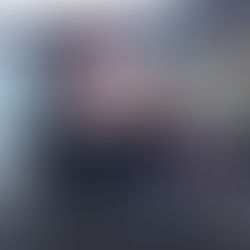Hamburger-Bahnof Museum for Contemporary Art and Some Local Trips
- WeareBerliner
- Dec 13, 2017
- 3 min read

Fifth Day at Berlin: Hamburger Bahnof and Some Local Trips On our fifth day, we woke up to a sunny morning. We hadn’t any meeting, so we went to a museum that we really wanted to see: Hamburger Bahnhof - Museum für Gegenwart (Museum for Contemporary Art). Interestingly, the neo-renaissance building of the museum is a former train station from 1840’s. In the museum there are paintings, sculptures, videos, installations and photographs. The museum is really big, it shows some of the most important examples of modern art in a 13,000 square meter exhibition space. The building hosts world famous works by Andy Warhol, Roy Lichtenstein, Anselm Kiefer and more.
West and East
Unfortunately, the Pop Art section was closed. But we have seen some stunning compositions influenced by cultural interaction and othering. For example in the installation of Qin Yufen called Making Paradise was constructed by combination of Eastern and Western culture; using sound, smell and ready made materials. A traditional Asian music was coming from the loudspeakers that placed in bamboos under a metal wire pile. Also a big orange curtain made of silk was standing behind this construction. In addition, a wheelbarrow which contains clothes and metal wheel placed at the other side of room with spices on bamboos. Here we can say that the productions of West (metal and curtain) and East (silk, bamboo and spices) narrate us the differences and integrations of cultures.
Alternatively, in Anselm Kiefer’s works, we see that he addresses Germany’s past and present. As he born in 1945, in post-world war era, the Nazi repression and discrimination can be seen in his works. The work Große Eisenfaust Deutschland (“Large Eisenfaust Germany”) refers to the Panzerfaust which is a weapon used by Nazis to stop the Red Army from advancing at the least weeks of war. Also, the painting “Leviathan” shows us the controversy of the collected Jewish datas in 1939 which was consulted for Holocaust . Indeed the sculpture “Schechina” tells us the perception of female in Jewish religion.
Venezuelan World
We also saw the work of Sol Calero and Iman Issa called Amazona Shopping Center. Here they critic the term “origin” which helps people to stereo-type the other. Sol said in a video placed in the exhibition that: “When I say that I come from Venezuela, they always talk to me about soap opera”. With this installation visitors enters the world of stereotyped “Venezuelan World”.
For us, it was the first time that we saw that quantity of works gathered in a such extensive place. We realize that contemporary art is a big part of Berlin. As the entrance price is low, people can come here without any economic doubts.
After seeing lots of contemporary works, we were very hungry, so we went to the closest restaurant called Peter Pan. There again, the waitress who served us knew Turkish. She didn’t say she was Turkish but her accent made us think that she was. When the meal finished, some of us wanted to go shopping, so we went to city center. There was a big cheap shop, everyone was there. Not just who was living in Berlin but tourists were shopping too. When we were in the shop we heard different languages included Turkish. The cashier was speaking Turkish, the women in front of us were saying that they came from Brazil while paying. The shop was like a small version of Berlin.
Then we went to Friedrichshain and entered a skatepark to drink some coffee. We observed children with their parents trying to skate. Thus, we learnt that in Germany, parents care about his children’s hobby and encourage them to improve his or her skills. Besides, around the park there was lots of building constructed at East Germany era and they had lots of graffiti on them.
When the rain was started, we entered the Christmas kermess which was like a medieval festival. Indeed, there had lots of Christmas decoration and they lighted a fire around benches. Stands from wood, traditional meals and music made felt us like we were in 16th century. Thus we understood that Berliners are bounded to their traditions.
“Potato Sack”
We were hungry one again. We decided to go to a nice restaurant in Europa Centar, a mall in Charlottenburg . The restaurant name was Kartoffelkiste which can be translated as “potato sack”. So, all of there meal contains some potatoes in different types. But the surprising part was, once again our waitress wasn’t German, she was Polish and Russian.
At the end of the day, although we weren’t expecting to receive anything that might be helpful for our project, we collected some details that helped us to understand much better the multi-cultural formation of Berlin.
































